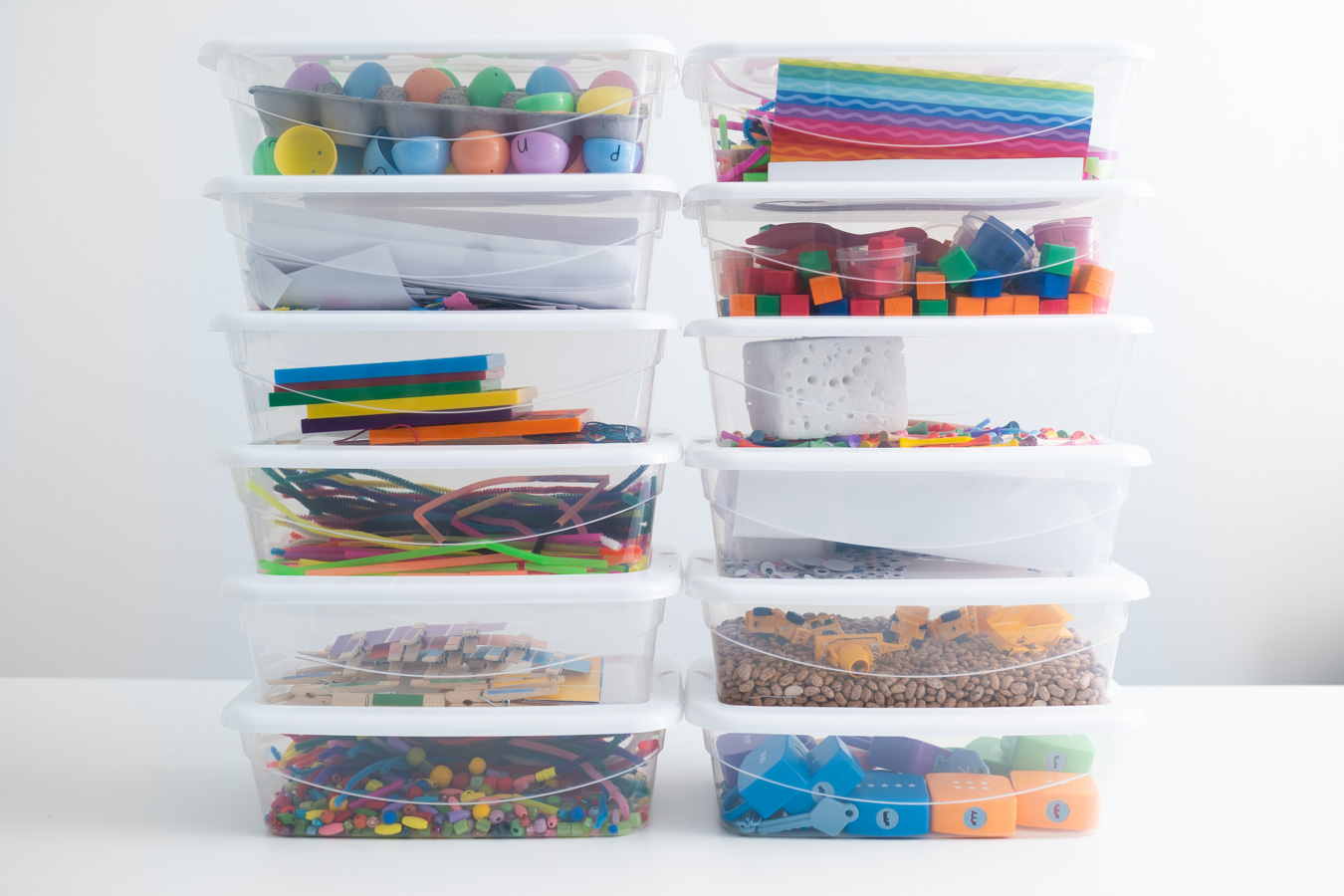
If you are anything like me, you’re always looking for ways to keep your little ones entertained, especially during homeschool. I usually struggle with keeping my 3 and 4-year-olds busy long enough for me to get through a lesson with my 7-year-old. Over the years, I’ve gotten pretty creative at this, but I always have to stay one step ahead of my younger children. So, this homeschool year I decided to create some Busy Boxes for my younger children, in hopes that they will keep them preoccupied long enough while I give my older child some uninterrupted 1-on-1 time.
If you’re unfamiliar with them, Busy Boxes are wonderful small bins filled with magical wonder for endless fun. (Yes, they really are that incredible to me!) Simply put, they are bins that typically have activities for toddlers or preschoolers to work independently on fine motor skills and other tasks. However, you can make a Busy Box for a child of any age or that focuses on other skills.
So far, I have made 12 Busy Boxes and they have been a major hit! My two younger children love them and they are easily preoccupied with them for at least 15-20 minutes per box (sometimes longer!) for some Independent Play. Most of the boxes I made focus on letter and number recognition, cutting and gluing, and a variety of other fine motor skills.
You can easily make simple, inexpensive Busy Boxes at-home for your toddler or preschooler! Most of the ones I made cost about $3-$5 each, including the plastic shoebox that holds everything. I purchased 95% of the materials from my local Dollar Tree, then the rest from Target, Amazon, and Lakeshore Learning, which was just a couple of items. I’ll show you exactly what you need to make your own Busy Boxes. Just make a note that for every Busy Box you will need a bin of your choice to store each set of items. I used plastic shoeboxes because of its size. Now, while these boxes were made for one child to use at a time for independent play, many of them can be used with multiple children at a time. Let’s take a closer look at them all!
#1: Number Unlocking
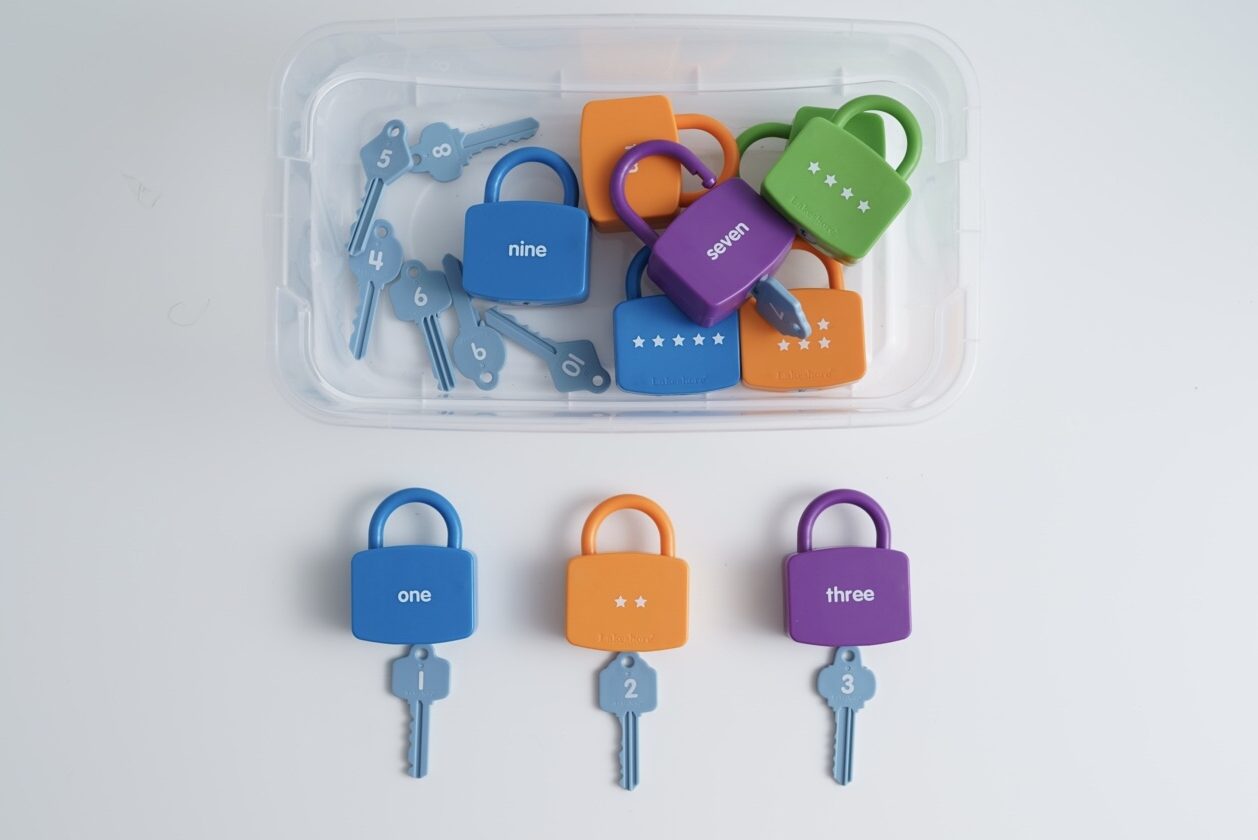
This Busy Box helps with letter recognition and also fine motor skills. The child’s task is to match the numbers on the keys with the appropriate lock. The locks have the number word on one side and the number represented by stars that can be counted on the other side. Once the child matches a key to a lock, they have to put the key in the lock and turn it to unlock the lock. I purchased this set from Lakeshore Education during a recent back-to-school sale. The set comes with numbers 1-20, but I only put numbers 1-10 in our Busy Box for now, so that my kids can get really familiar with those numbers first.
#2: Lacing Beads
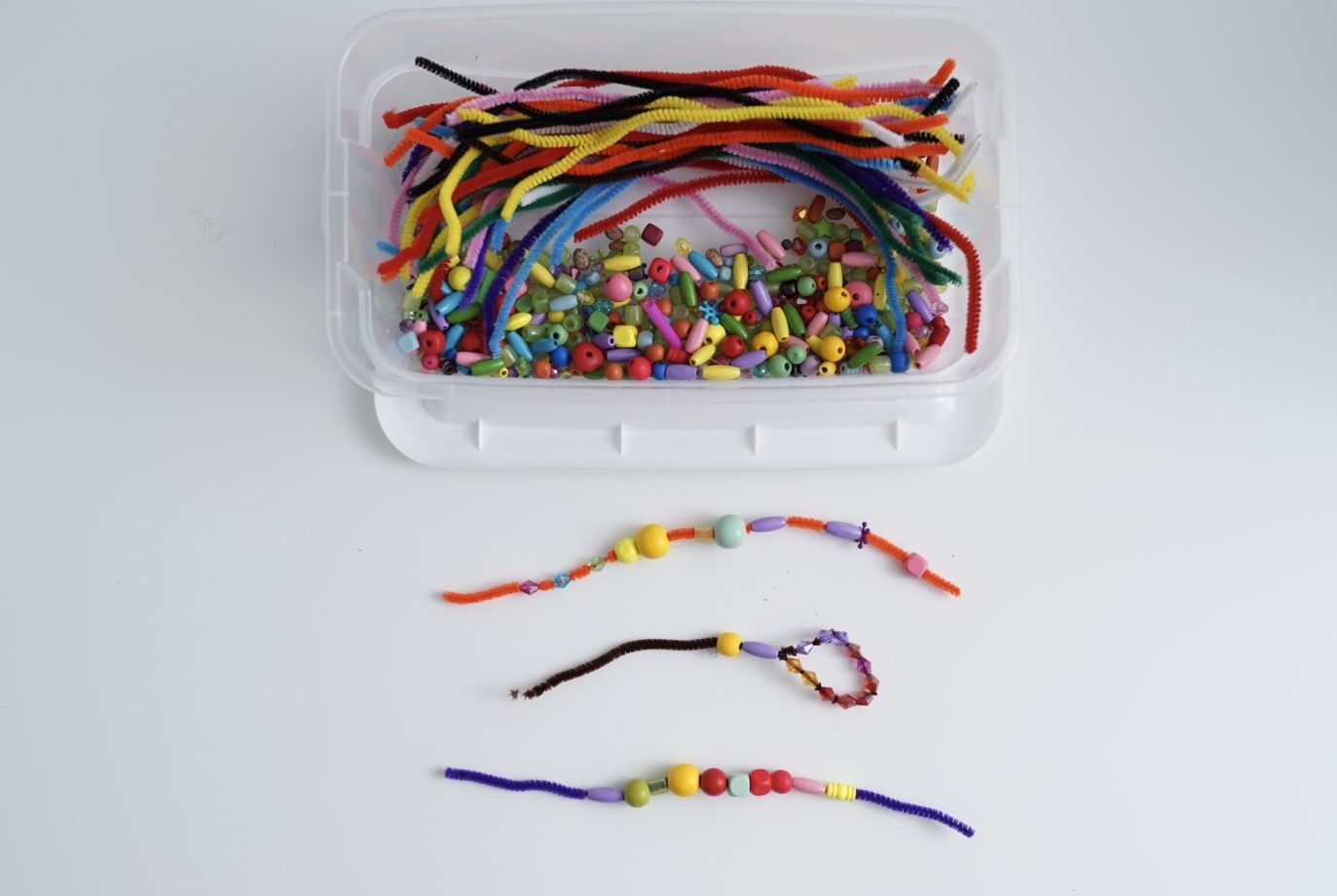
While the primary focus of this box’s activity is fine motor skills (stringing the beads onto the pipe cleaners), children are also able to practice identifying colors, shapes, and even compare sizes. And if your kids are like mine, they will soon be making you a bunch of bracelets and necklaces! To set this box up, just put some beads and pipe cleaners in the plastic shoebox, and you’re done!
#3: Lacing Straws
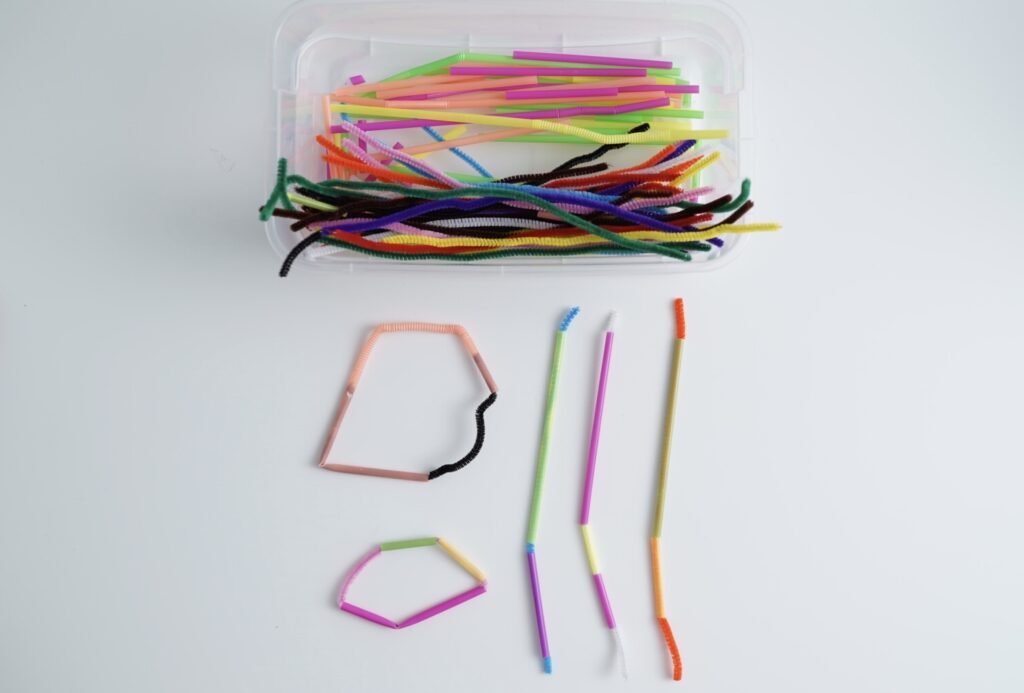
This Busy Box is very similar to the Lacing Beads. The primary focus here is fine motor skills, stringing the pipe cleaners through the straws. However, children will also be able to practice identifying colors and sizes. To set this box up, cut up the straws into various lengths. Then place everything into the plastic shoebox. Done!
#4: Stick It To Me
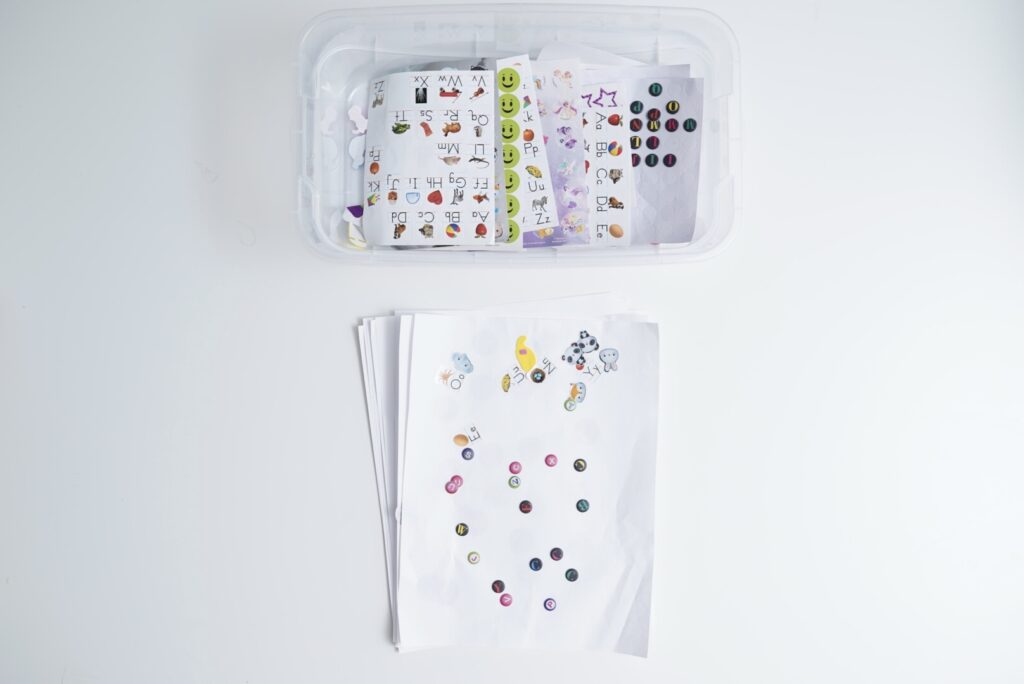
How simple can it get? Grab some stickers and some white paper (or colored paper if you’d prefer) and put it in a plastic shoebox. Your child will be able to work on their fine motor skills when peeling the stickers off of the sheets and placing them on the white paper. They will also be able to unleash their inner artist while working on their sticker creation.
#5: Ooey Gluey
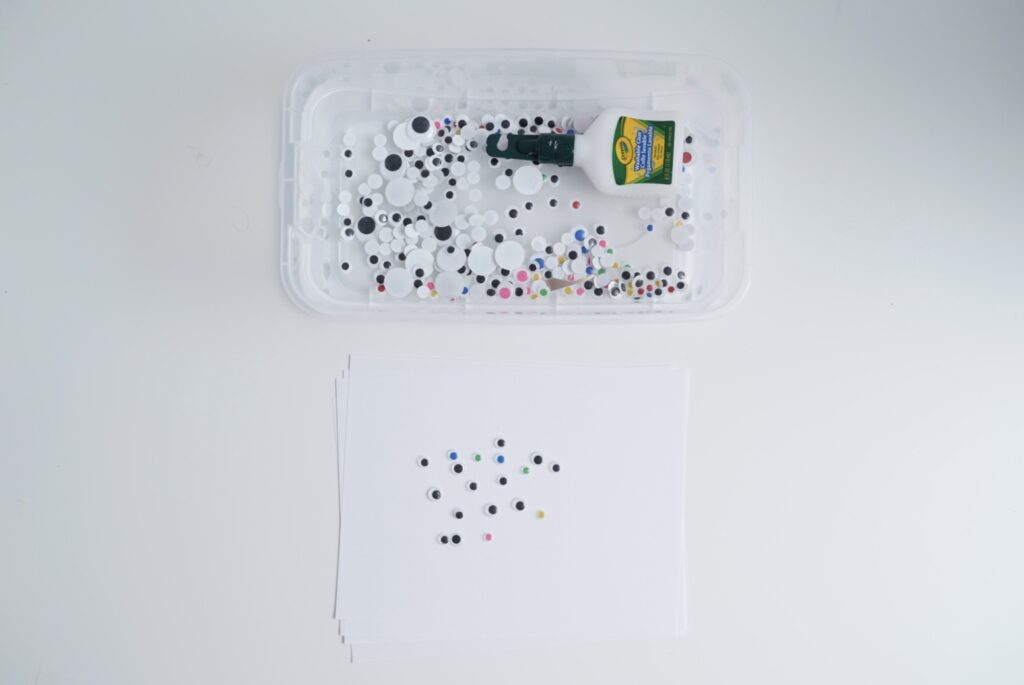
Your child will practice gluing skills with this Busy Box. They will practice applying glue to an object and then placing it on their paper. You can choose a variety of different objects as well! For example, if you want to keep things simple, you can use torn pieces of tissue paper or cut out shapes from construction or patterned paper instead of the googley eyes and colored pasta. (Note: Colored pasta can be made by coloring dry wagon wheel pasta, or another pasta type, with markers or paint. At the time of this post, our box does not have colored pasta.)
#6: Cutting Practice
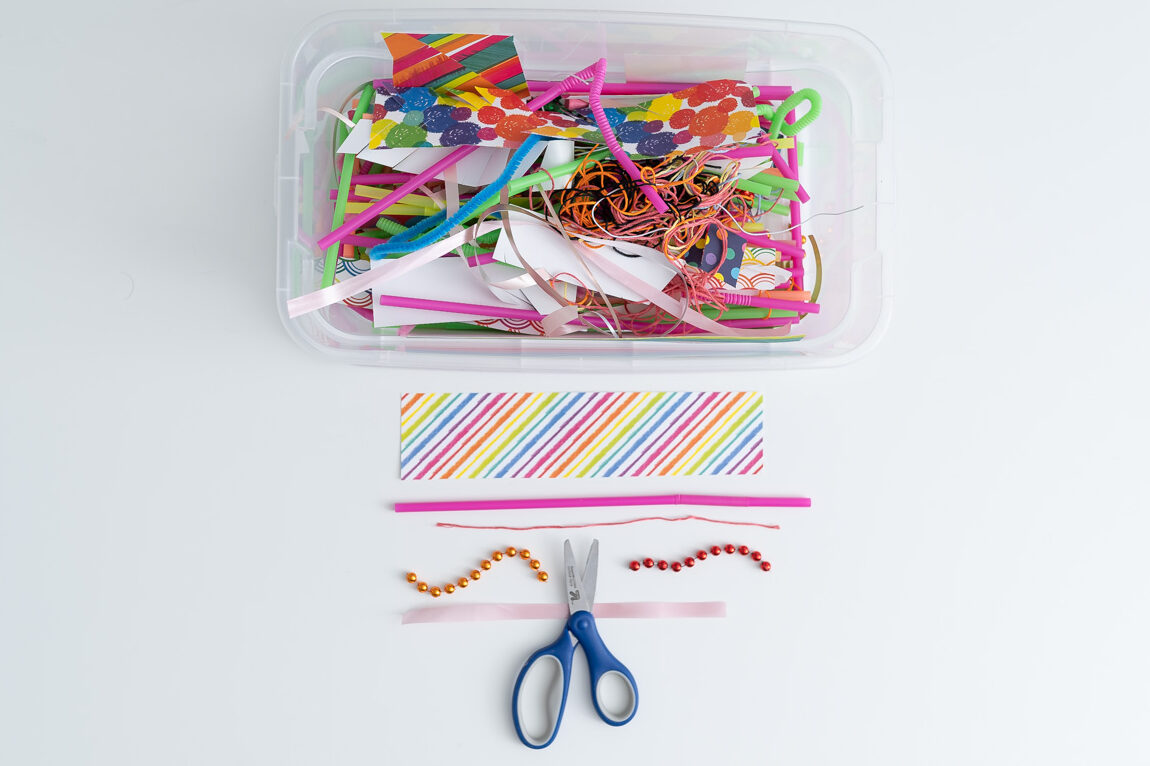
If your child needs more practice with their cutting skills, this Busy Box is perfect and loads of fun! It’s pretty straightforward for both you and them. Anything in this box is fair game for cutting, so they will feel free to make a mess and you can breathe easily knowing that they aren’t cutting that they shouldn’t.
#7: Hammer Time
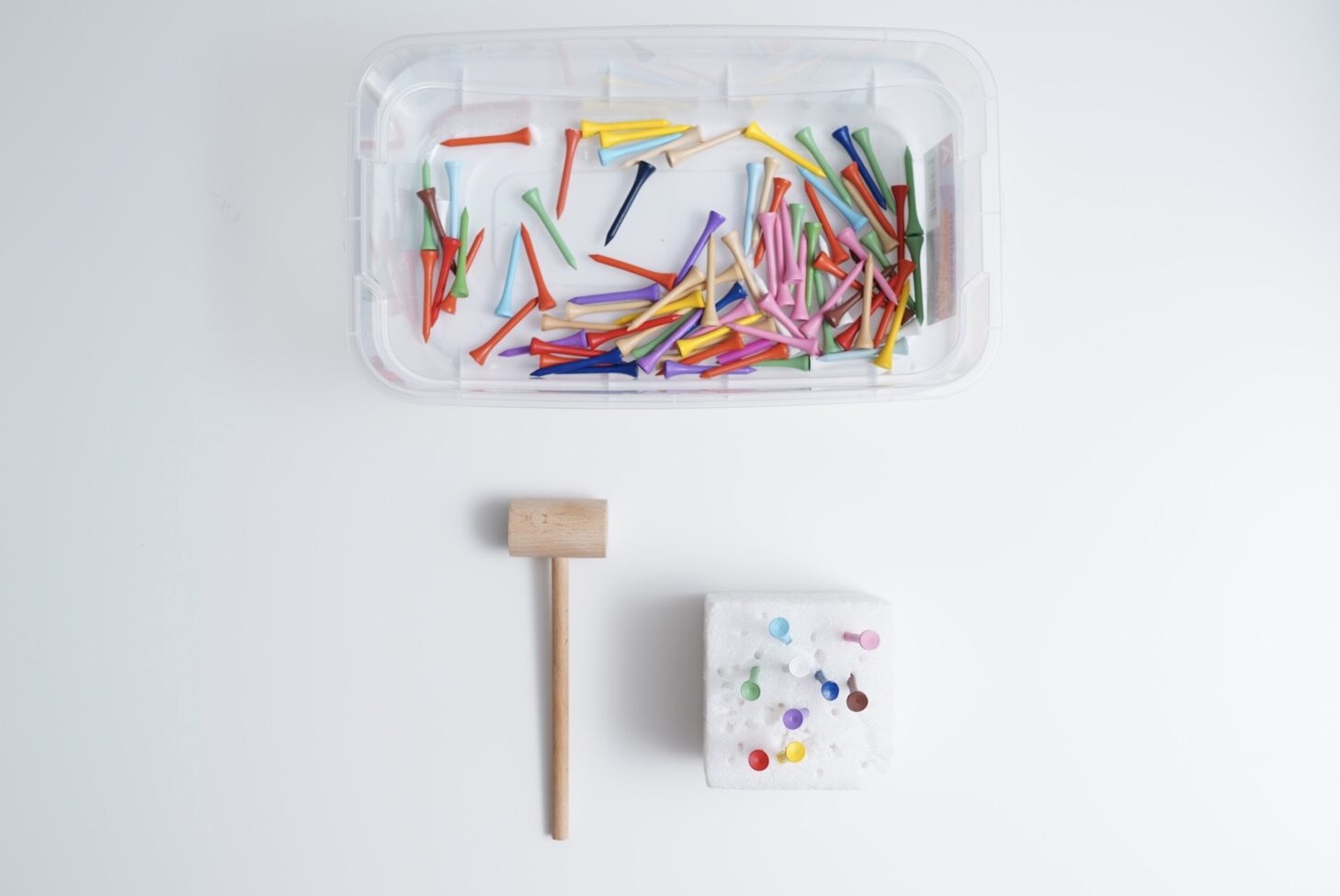
This Busy Box will definitely be a big hit with your child. (I know, that was a corny joke, but I had to do it!) The goal of this activity is to hammer golf tees into the foam block. I used colored golf tees to reinforce colors with my children (plus who doesn’t like a little color?).
#8: Letter Hatch Match
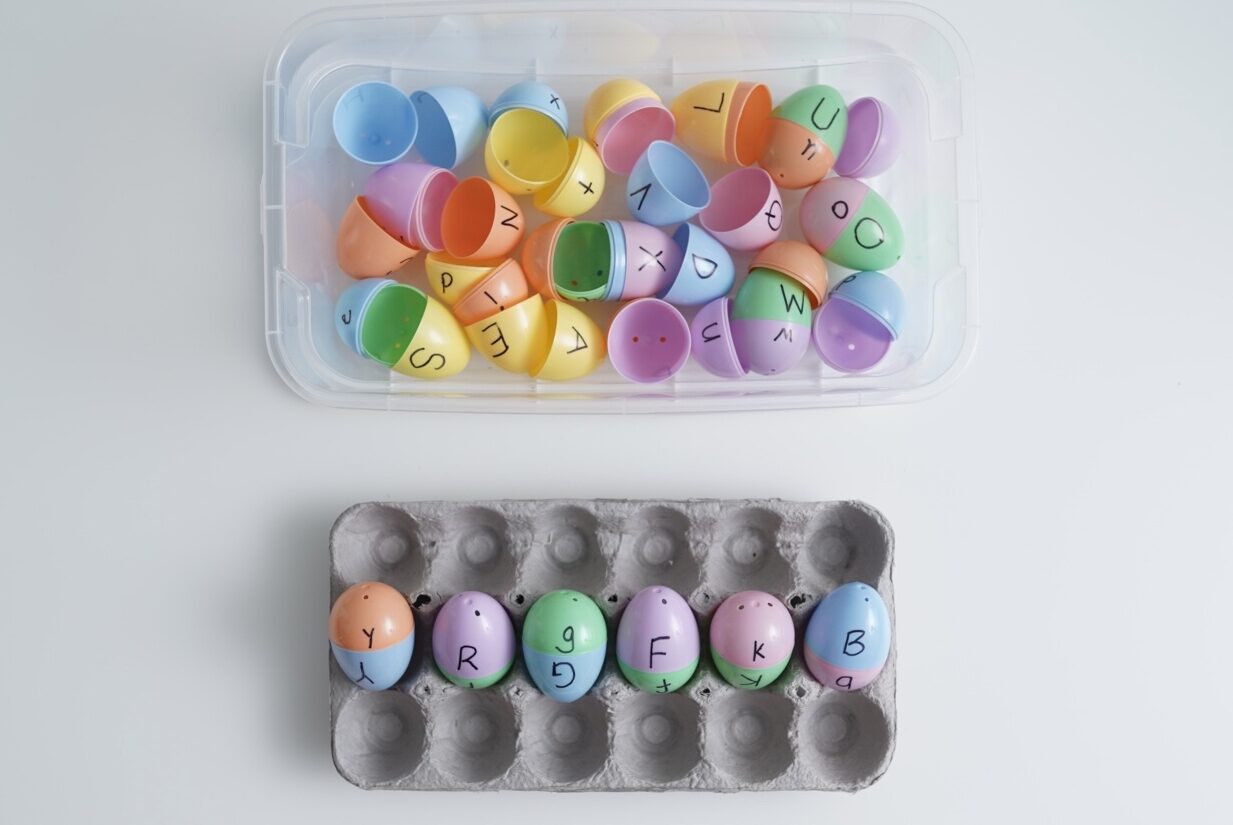
This Busy Box is great for working on letter recognition. To set it up, you will need to use a permanent marker to write all of the letters of the alphabet on the plastic Easter eggs. Specifically, you will write lowercase letters on the bottoms and uppercase letters on the tops. I recommend mix and matching colors so that the sole focus will be on matching the uppercase and lowercase letters together. However, if you wish to write each letter pair on the same colored egg, that’s a great way to incorporate color recognition as well. It’s totally up to you! As your child finds letter pairs, they can place the eggs in an egg carton for extra fun.
#9: Construction Zone
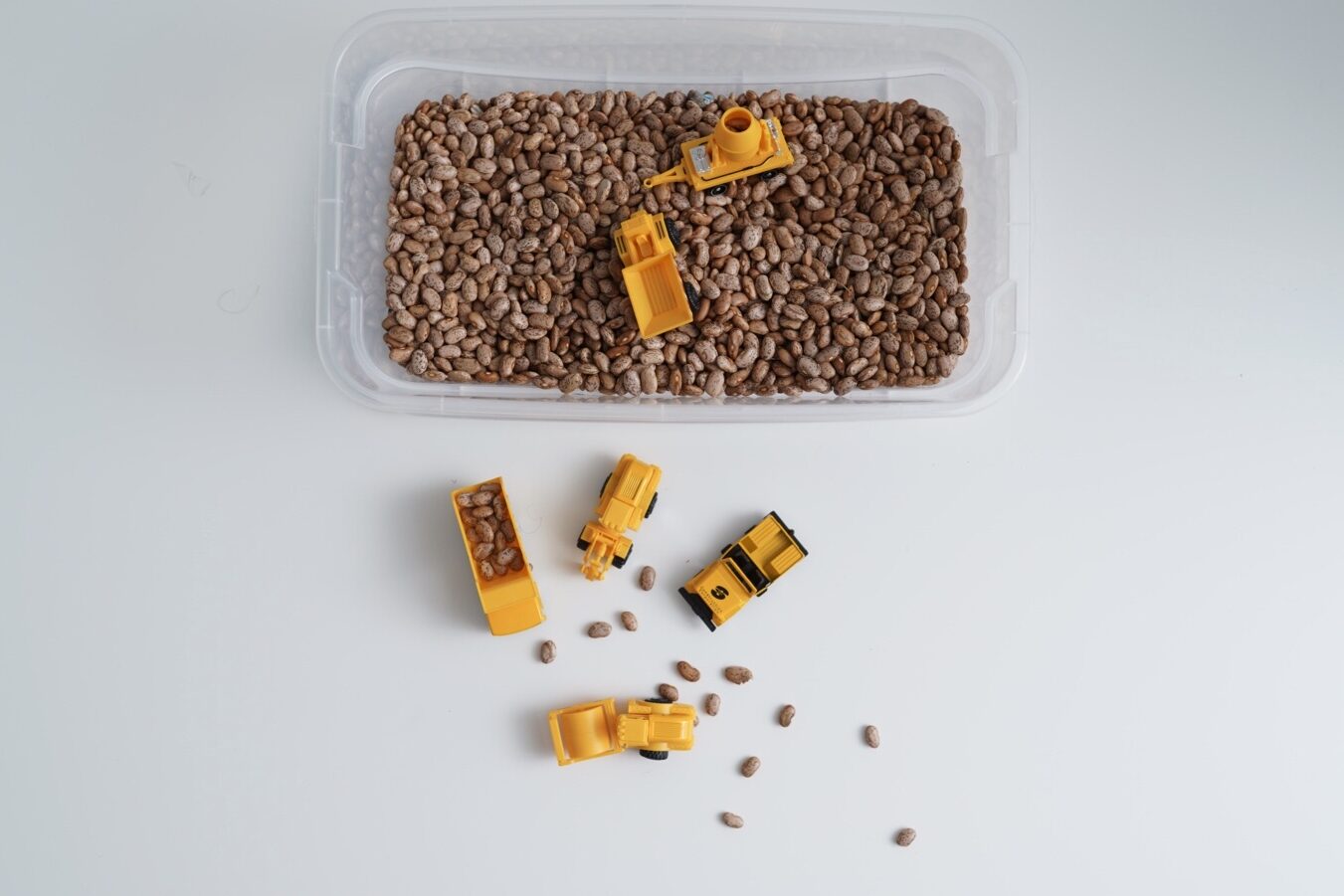
What I love about this Busy Box is that you have the option of making it 5 times as big for multiple children to play together — and it doesn’t take a lot of supplies to make it! Your child can spend hours using their imagination at their own construction site. Again, you can find these materials at your local Dollar Tree, but because I wanted to use pinto beans (to look like gravel), I had to purchase them at my local Target. Of course, you can use any dry beans you have on-hand. You could also use dry rice, regular sand, or kinetic sand, but trust me when I tell you that those are harder to clean up.
#10: Geo-Shapes
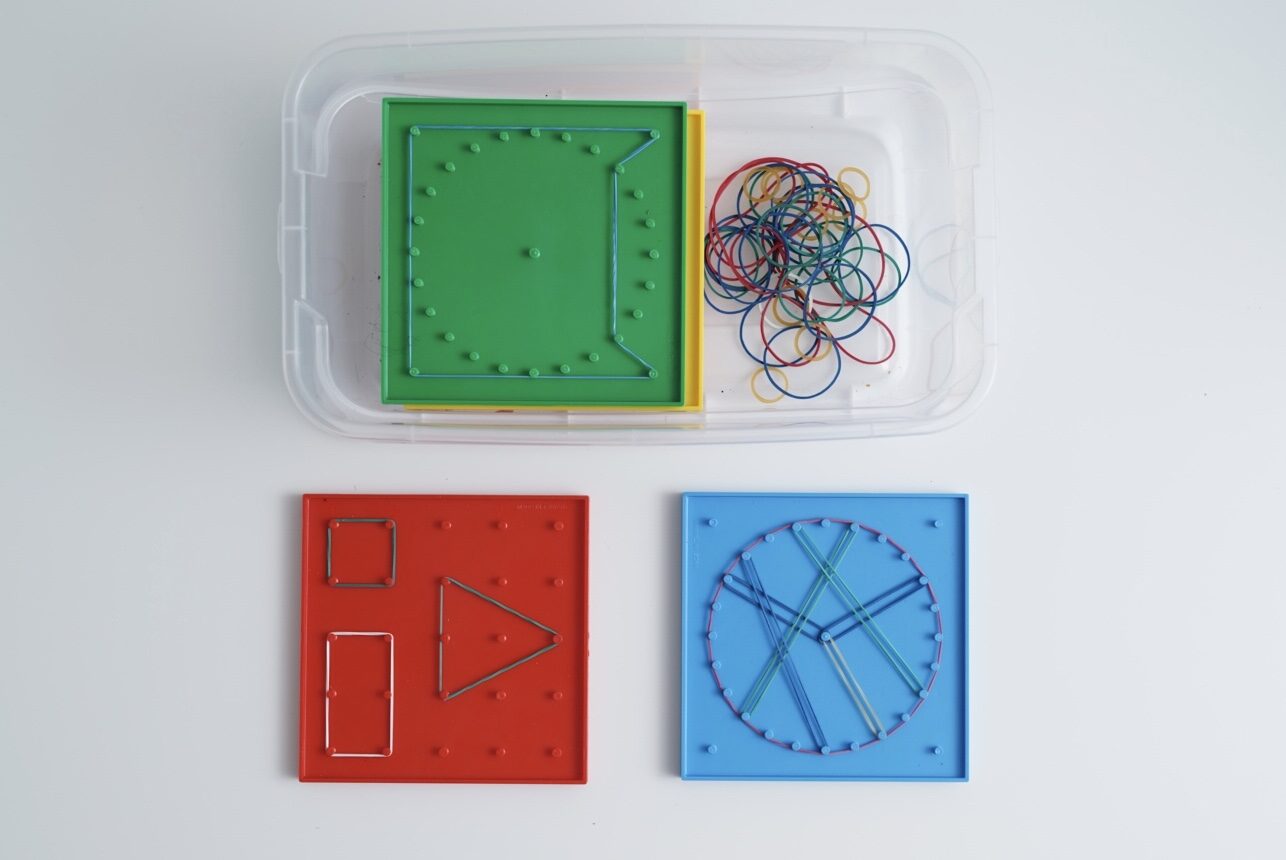
Geoboards are wonderful math tools to teach geometry. With this Busy Box, children can practice recreating various shapes and make designs that tap into their wildest imaginations! If you wish to make this activity more challenging (and even more focused), you can create cards with different geoboard shapes for your child to try to create on their geoboards. You could draw these designs on index cards yourself or find a free geoboard printable. (Just don’t forget to laminate it for extra longevity!) I purchased a set of geoboards and rubbers at Lakeshore Learning.
11. Color Sorting
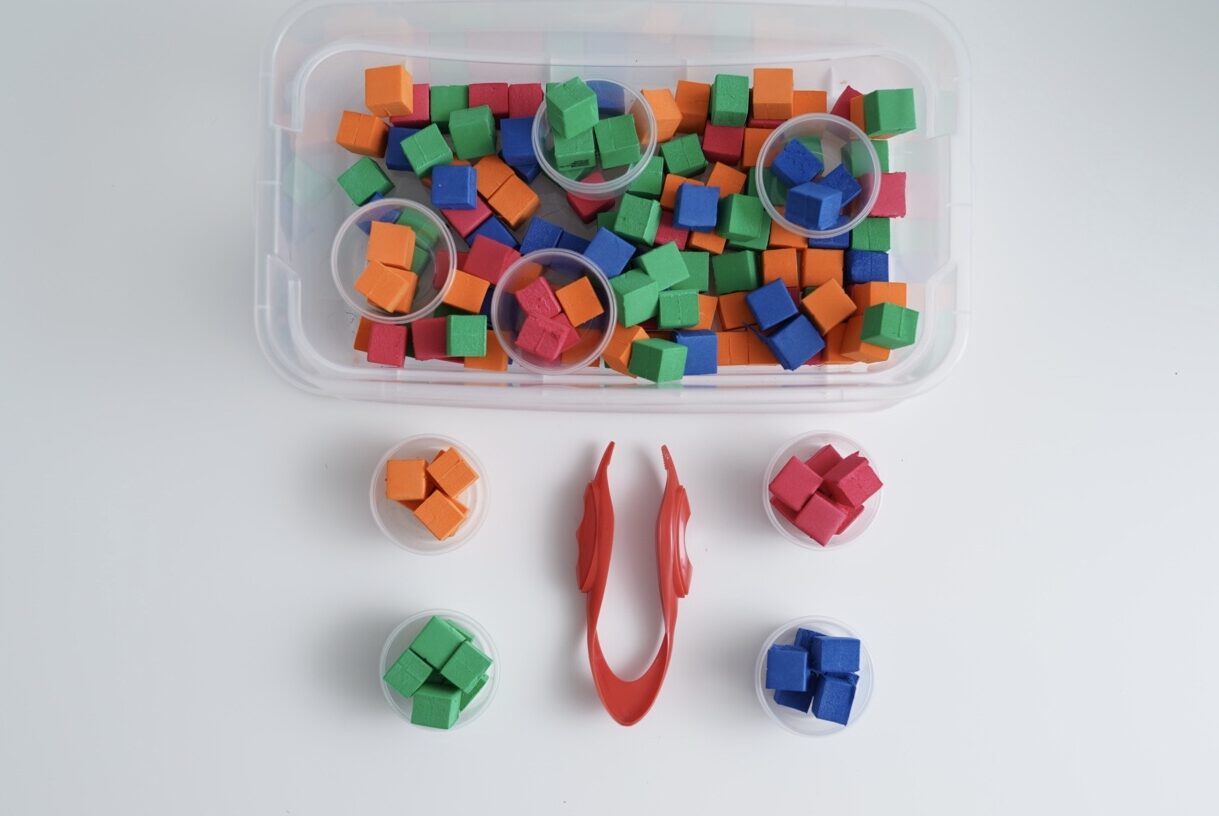
This Busy Box focuses on color recognition and sorting skills. Children can use their fine motor skills to pinch or squeeze the tweezers to pick up the colored foam cubes or pom-poms and sort them into the small cups. Take this activity one step further by having them count the objects in each cup or to use their tweezers to stack the foam cubes into a tower.
12. Color Matching
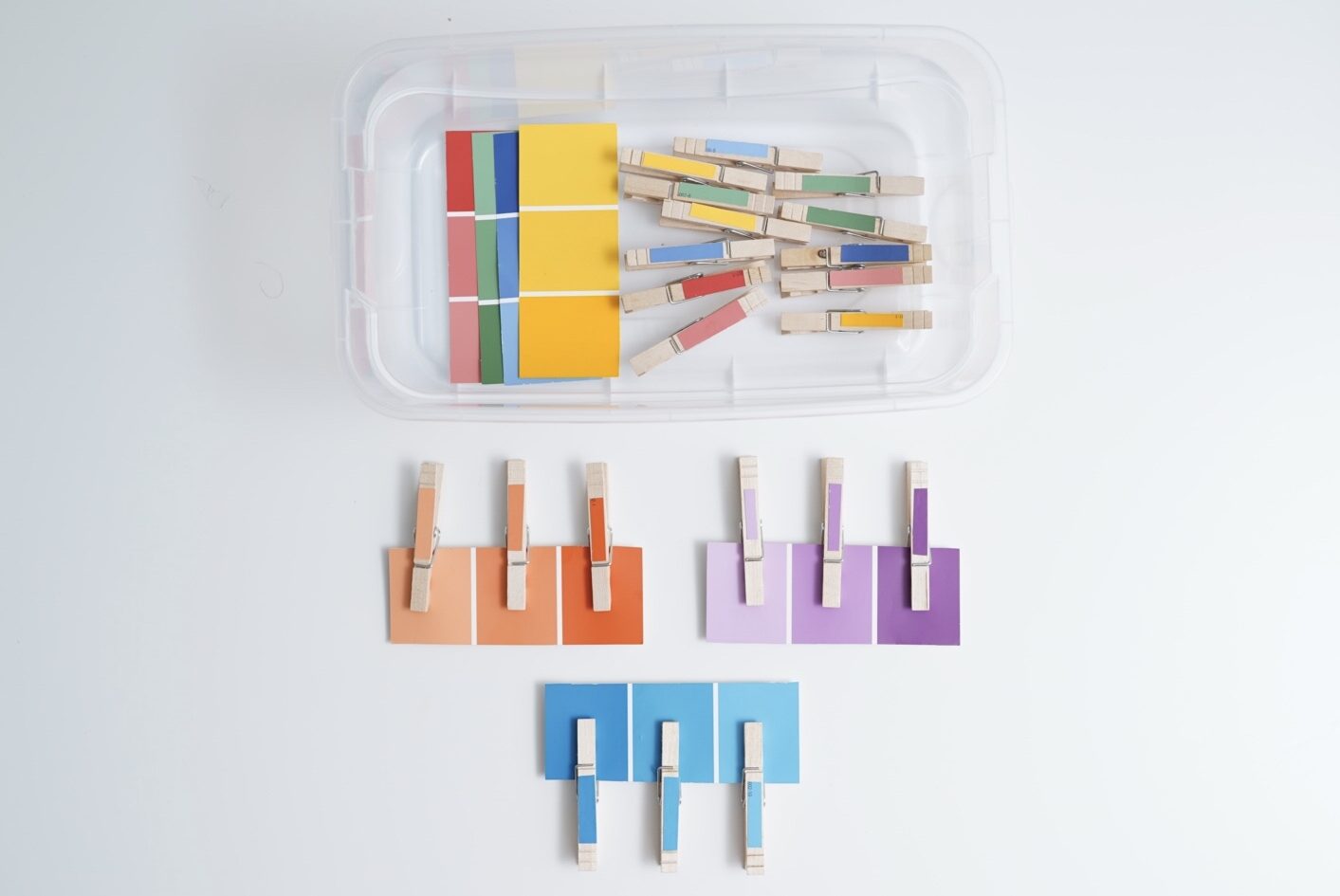
This is another box that is super simple to make! To set this up, you will need to cut a thin strip from each paint swatch and glue those thin strips onto clothespins. The objective of this Busy Box is to match the color on the clothespins with the paint swatches. Your child will be using fine motor skills to pinch or squeeze open the clothespins and release them once they have aligned them with the matching colors.
These Busy Boxes are such a hit with my children — even my 7-year-old enjoys playing with them! I swear these things are magical because my normally lively home becomes quiet when the kids are using them. It’s definitely a sight to see! Which Busy Box(es) are you going to make? Do you have an idea for another Busy Box? If so, please share it with us to try!

